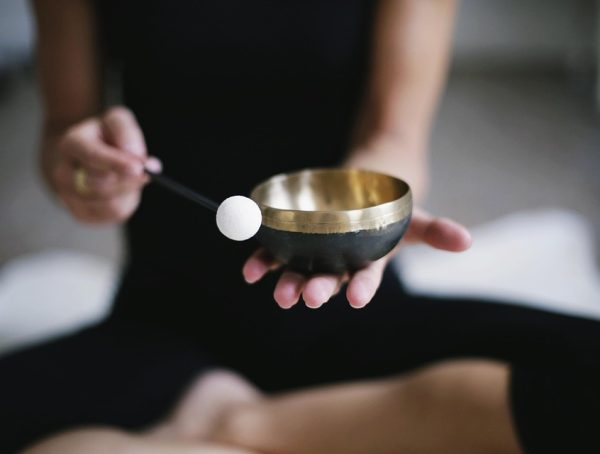A Comprehensive Look at the Three Types of Meditation
In today’s fast-paced world, stress and anxiety have become commonplace, leading many to seek solace and clarity. One of the most effective ways to foster inner peace and improve mental clarity is through meditation. This ancient practice has evolved over thousands of years and encompasses various forms and techniques. In this article, we will explore three prominent types of meditation, along with action steps for how you can incorporate them into your daily life.
1. Mindfulness Meditation
Overview:
Mindfulness meditation is about being fully present in the moment without judgment. This type of meditation originates from Buddhist traditions and encourages an awareness of thoughts, feelings, bodily sensations, and the surrounding environment. By practicing mindfulness, individuals can cultivate a greater sense of peace and clarity.
How to Practice Mindfulness Meditation:
- Find a Quiet Place: Choose a calm environment where you won’t be disturbed.
- Sit Comfortably: Sit in a comfortable position, either on a chair or the floor with your legs crossed.
- Focus on Your Breath: Close your eyes and take deep, slow breaths. Focus on the sensation of the breath entering and leaving your body.
- Acknowledge Thoughts: When thoughts arise, don’t try to suppress them. Acknowledge them, then gently return your attention to your breath.
- Practice Regularly: Start with 5-10 minutes daily and gradually increase the duration as you become more comfortable.
Action Steps:
- Set a timer on your phone for daily mindfulness meditation.
- Use guided meditation apps like Headspace or Insight Timer to get started.
- Journal your experiences post-meditation to track your progress.
2. Transcendental Meditation (TM)
Overview:
Transcendental Meditation is a simple, natural technique introduced by Maharishi Mahesh Yogi in the 1960s. TM uses a specific mantra—a word or sound that is repeated silently—to settle the mind into a state of profound rest and relaxation. It is practiced for 20 minutes twice a day while sitting comfortably with your eyes closed.
How to Practice Transcendental Meditation:
- Learn the Technique from a Certified Instructor: While TM can be learned through books and videos, it’s generally recommended to find a certified instructor for proper guidance.
- Choose Your Mantra: Your instructor will assign you a personalized mantra based on specific criteria.
- Sit Comfortably: Find a quiet place to sit and close your eyes.
- Repeat Your Mantra: Silently repeat your mantra in your mind. If your thoughts wander, gently bring your focus back to the mantra.
- Think Less About Technique: With TM, the goal is to experience a deep state of relaxation, so don’t overthink your practice.
Action Steps:
- Research and find a certified TM instructor in your area or online.
- Commit to two sessions of 20 minutes each day.
- Keep a meditation diary to note any shifts in your mood or state of mind after practice.
3. Loving-Kindness Meditation (Metta)
Overview:
Loving-kindness meditation, or Metta meditation, focuses on developing an attitude of love and kindness towards oneself and others. This practice is rooted in Buddhist traditions and can help foster compassion, reduce anxiety, and increase emotional well-being.
How to Practice Loving-Kindness Meditation:
- Sit in a Comfortable Position: Similar to other meditation types, begin in a comfortable seating position in a quiet space.
- Breathe Deeply: Take a few deep breaths to relax your body and mind.
- Silently Repeat Phrases: Start with yourself using phrases like, “May I be happy, may I be healthy, may I be safe, may I live with ease.” Gradually extend these wishes to loved ones, acquaintances, and even those with whom you have difficulties.
- Visualize Loved Ones: Picture those for whom you are sending loving-kindness and visualize them receiving your good wishes.
- End with Self-Affirmations: After extending kindness to others, return to yourself and repeat affirmations of kindness and love.
Action Steps:
- Create a list of individuals and groups you want to include in your practice.
- Schedule a specific time each week to focus on loving-kindness meditation.
- Experiment with adding music or guided sessions available on platforms such as YouTube.
Final Thoughts
Meditation is a transformative practice that can lead to emotional resilience, increased focus, and a profound understanding of oneself. No matter which type of meditation resonates with you—mindfulness, transcendental, or loving-kindness—you can harness the peaceful benefits that come with making meditation a regular part of your life.
Remember to be patient with yourself as you embark on this journey. Mindfulness, like any skill, requires practice and time. You will increasingly find clarity and calm in your daily life as you deepen your meditation practice.
So, start today! Choose one technique that resonates with you and commit to it. With perseverance and intention, you can transform your life, one breath at a time.
“Health is not just about what you’re eating. It’s also about what you’re thinking and saying.”
If you found this article helpful, be sure to follow Kevin on Instagram (@KSteineman) for more insights and inspiration on living a healthier, happier life.
You might also like
More from Meditation
The Role of Mantras in Transcendental Meditation: A Deep Dive
The Role of Mantras in Transcendental Meditation: A Deep Dive Transcendental Meditation (TM) has garnered a significant following across the globe, …
The Science Behind Meditation: Improving Mental Health Naturally
The Science Behind Meditation: Improving Mental Health Naturally In today's fast-paced world, the pursuit of mental wellness has become paramount. Thousands …
Understanding the 7 Types of Meditation for Beginners
Understanding the 7 Types of Meditation for Beginners: A Path to Inner Peace Meditation has become a popular practice in recent …


































